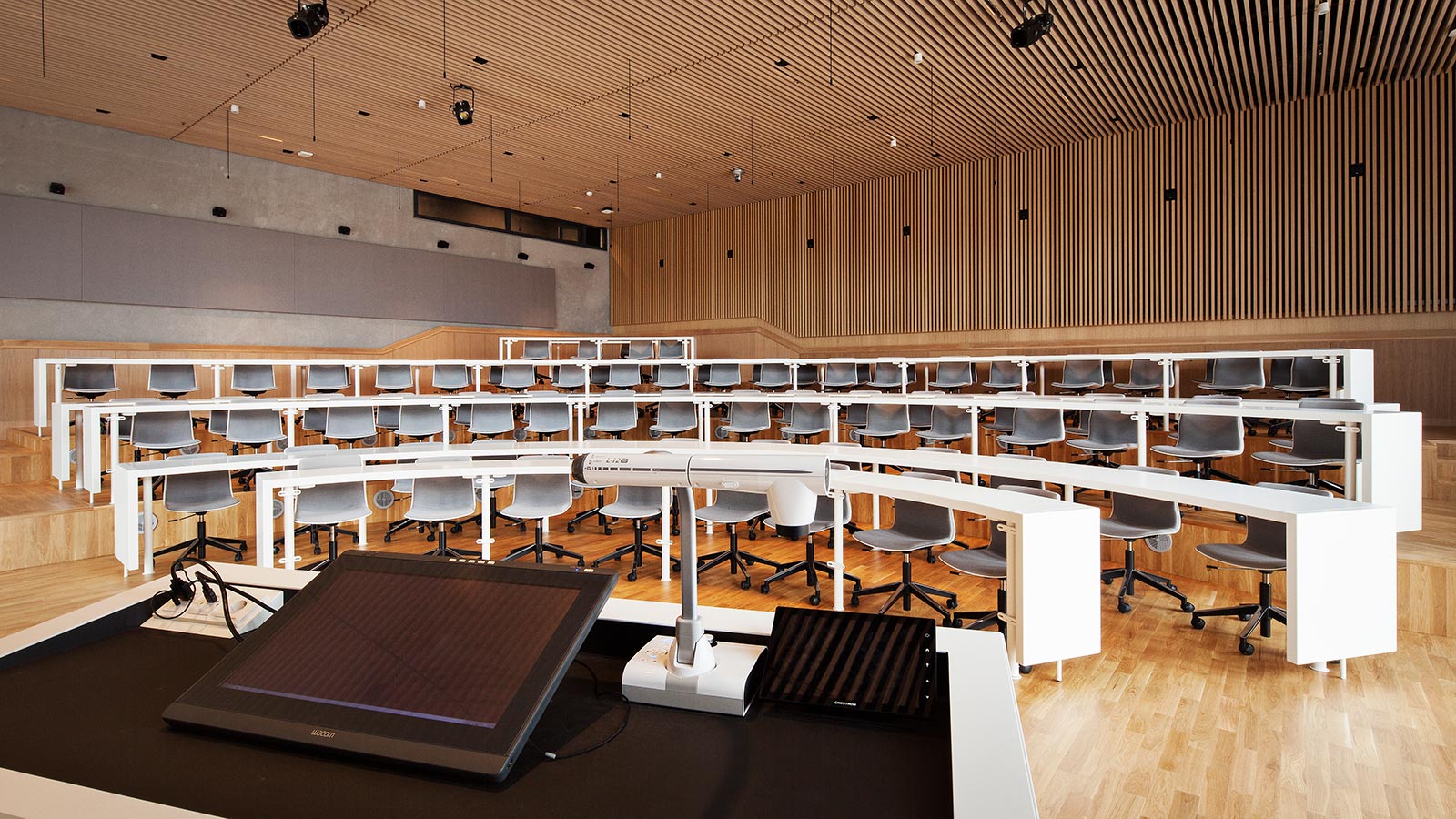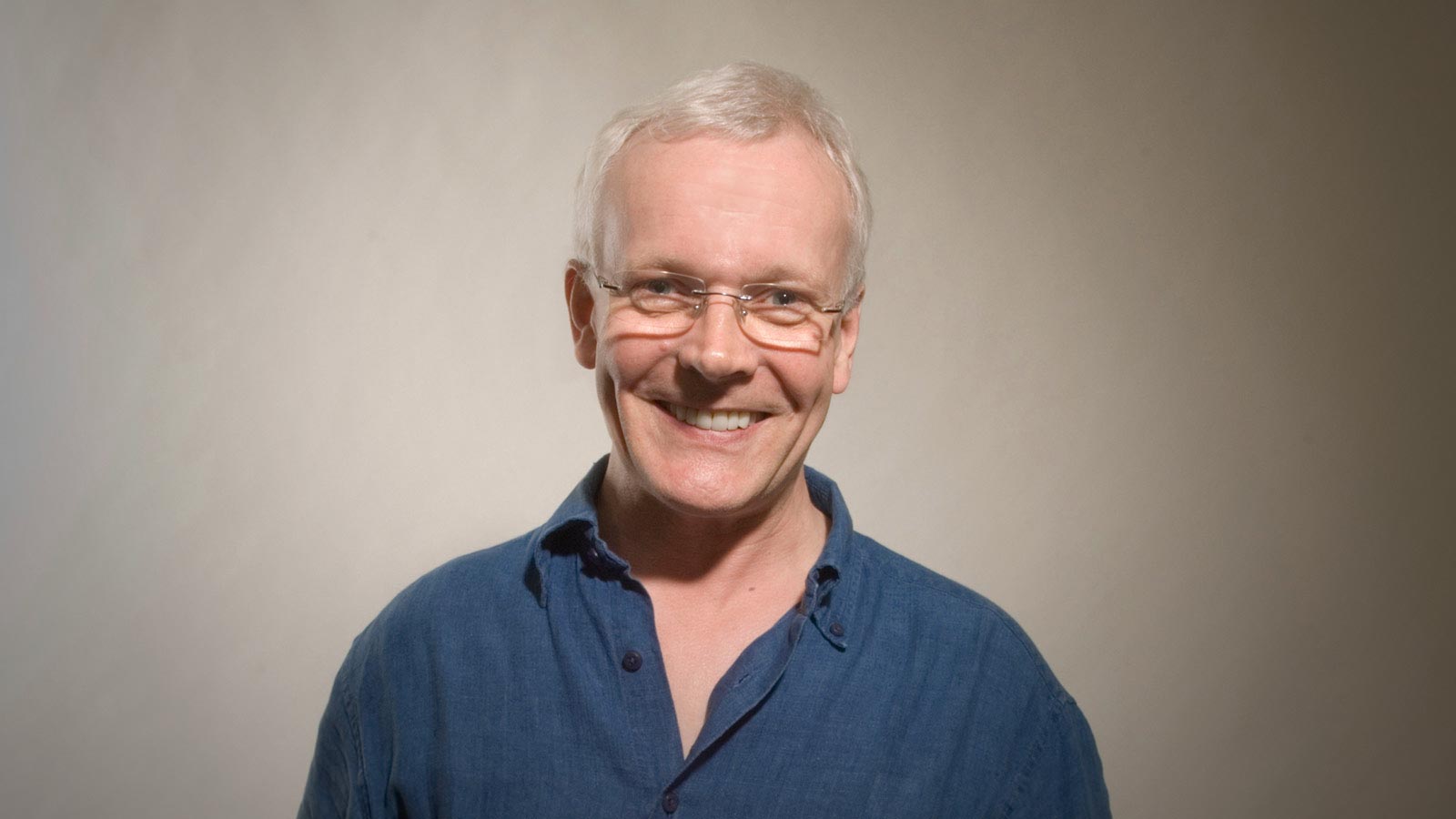Meyer Sound Laboratories, Inc.
Berkeley, CA 94702
United States


As a Project Director for Constellation, John Pellowe is one of a small team responsible for the calibration and voicing of Meyer Sound’s Constellation active acoustic systems throughout the world. Prior to joining Meyer Sound in 2006, Pellowe had earned distinction as a Grammy-winning classical music recording engineer for Decca Records in London, and he also served as the sound engineering director for global concert tours by Luciano Pavarotti and The Three Tenors. One of Pellowe’s recent and most challenging assignments was fine-tuning three Constellation systems in the Maersk Building, a technologically groundbreaking addition to the Panum Institute for medical training at the University of Copenhagen. In the following Q&A he discusses how this installation charts new directions for Meyer Sound’s Constellation program.
Why was Constellation integrated into auditoriums for the Maersk Building?
Pellowe: The Maersk Building was designed to be the most environmentally friendly and technologically advanced medical training facility in Europe. It was a project without compromise due to budget thanks to the generosity of the Maersk family’s foundation. They wanted to apply the most advanced learning environment to every single area of the building, which meant incorporating Constellation into the three main lecture theatres, the smallest seating about 130 and the largest more than 500.
What specifically are the advantages of Constellation in this application?
Pellowe: Some rooms in the medical school have small PA systems and lecturers use conventional mics. We all know this is one-way communication: one person speaks and everybody else listens. Although it can be argued that this is fine for smaller rooms, there’s an inevitable detachment between the lecturer and students created by the lack of acoustic intimacy that grows with room size. The bigger the space the more impractical it becomes to hold two way conversations that everyone can understand. In larger rooms if somebody in the back left hand corner has a question, few can understand what is said unless the questioner raises their voice. So the idea was to create an environment for larger rooms where firstly, the lecturer could speak without the aid of a microphone. It saves them the problem of having to wear one or keep focused on podium mounted mics. Secondly, to create an environment where everyone can hear anyone else during debates and questions. Both problems are solved with a Constellation voice lift system. The system can operate in several modes, but the two most important are Presentation and Questions and Answers (Q&A). In Presentation mode, the voice lift is focused primarily on the area just in front of the video walls to support lecturers, but it still offers some support for others in the room should someone raise a quick question. But the presenter, with the push of a touchscreen button, can switch to Q&A mode where, although the lecturer has an elevated precedence, anyone can speak to anyone else in the room and be heard clearly, even by someone sitting behind a questioner. Of course, the larger the room the greater the challenge. In a 500 seat lecture hall this becomes an extraordinarily complex undertaking. We are incredibly proud of the results we’ve achieved as it was groundbreaking in terms of its size and the demands on the system. Just to add, we were surprised to learn that the Danish people are not the loudest speakers. They sometimes talk exceptionally quietly!
What are the challenges of integrating Constellation into complete AV presentation systems?
Pellowe: AV has now become an integral part of mainstream lecture facilities, and one problem is that screens are getting much larger. Regardless of where you are in the room, you don’t want to see microphones hanging in front of a video image. To make these rooms work with microphones placed out of the line of vision we need a very low reverberation time in the unassisted acoustic. For example, in a concert hall designed for classical music, you typically have a physical reverberation time (RT) between 1.8 and 2.2 seconds. Here, in the two small auditoriums, the RT is about 0.35 seconds while the large auditorium is 0.5 seconds.
Can the Constellation system be used with video playback?
Pellowe: Yes, video sound can be part of any lecture at any time. You don’t need to distinguish between the two with Constellation. We always put some loudspeakers at the front of the room to anchor the sound source to the screen, but the sound is also matrixed across the entire Constellation system, so you have more immersive sound.
How were tuning and calibration accomplished for the Maersk Building?
Pellowe: After the initial calibration and voicing the university brought in students for three lectures that were held deliberately for voicing in the large auditorium, which was the principal challenge. After the test sessions, they scheduled regular classes where I could fine-tune the system on my computer during lectures. After all lectures attended by me and Anders Jørgensen of Stouenborg our system integrator and project partners, we would gather feedback, asking if participants are hearing clearly. As we went through the first few weeks we refined the settings to accommodate the most soft-spoken voices. We’re very pleased with the end result.
How do Constellation systems for voice intelligibility differ from those created for music enhancement?
Pellowe: Constellation music systems are designed to increase the venue’s reverberation time. Microphones in the auditorium are deliberately placed high above the audience enabling them to capture indirect sound that’s returned into the venue as reverberation. By adding gain to the system, Constellation starts to regenerate, increasing reverberation strength and length. Conversely, microphones above the stage capture sound from performers that’s distributed throughout the venue using our early reflection system to add clarity and intimacy. This is an in-line process that does not regenerate or increase reverberation time. Constellation voice lift systems also rely on early reflections. They are not designed to increase reverberation time but instead rely on the omnidirectional distribution of decorrelated and time critical early reflections throughout the space. Microphones for voice lift are generally placed nearer to people, and the room is required to have a much lower physical reverberation time than a music venue.

 Microphones
Microphones